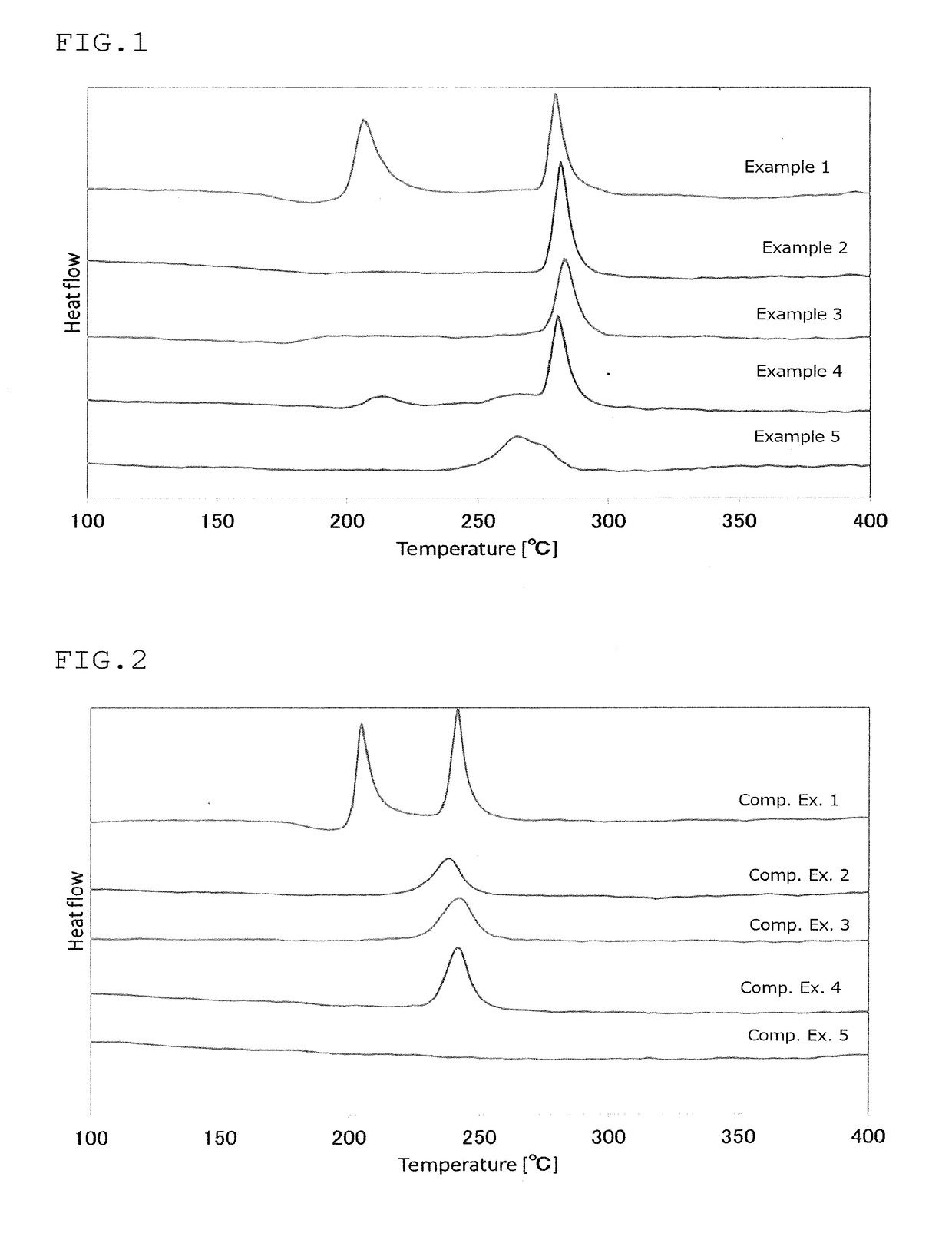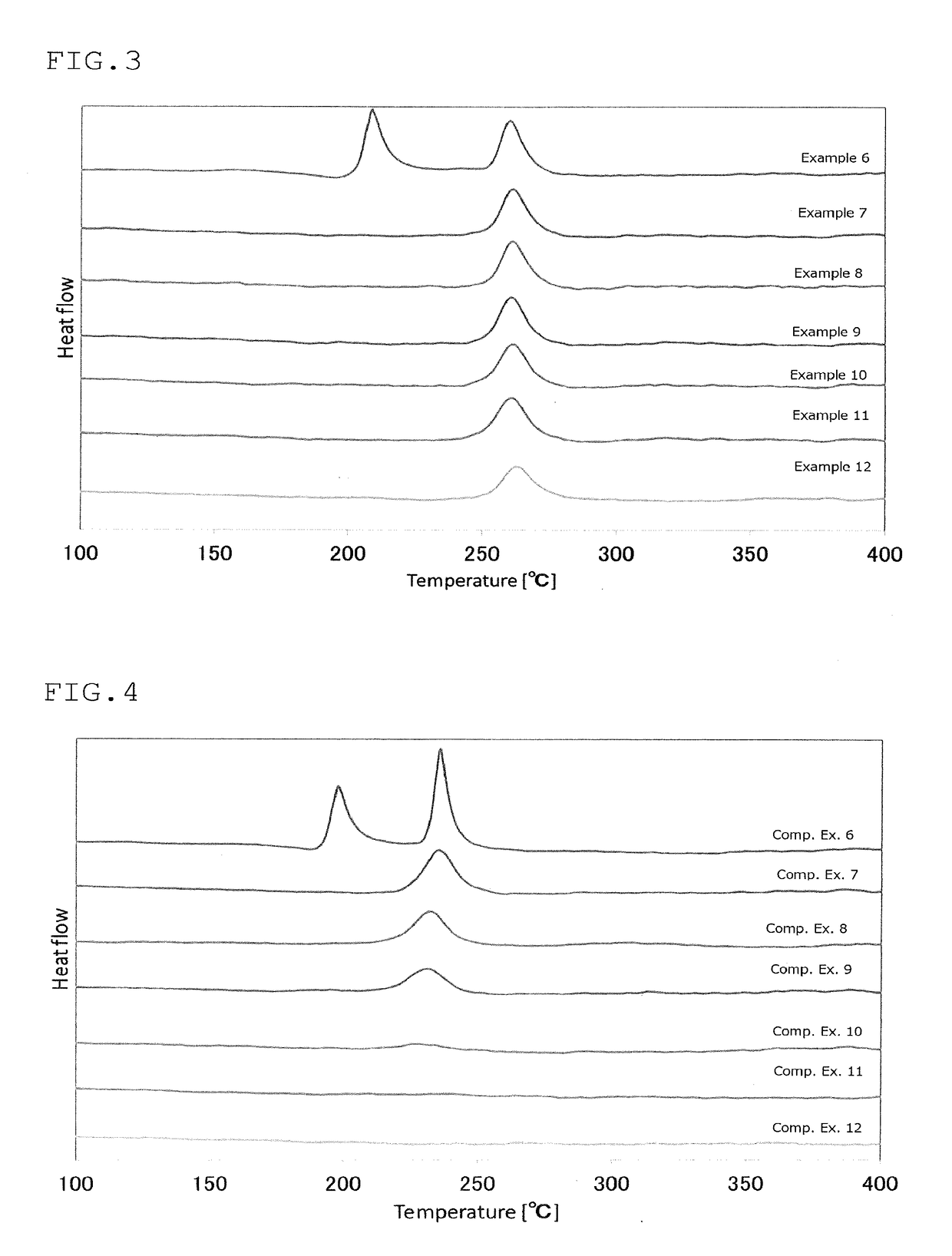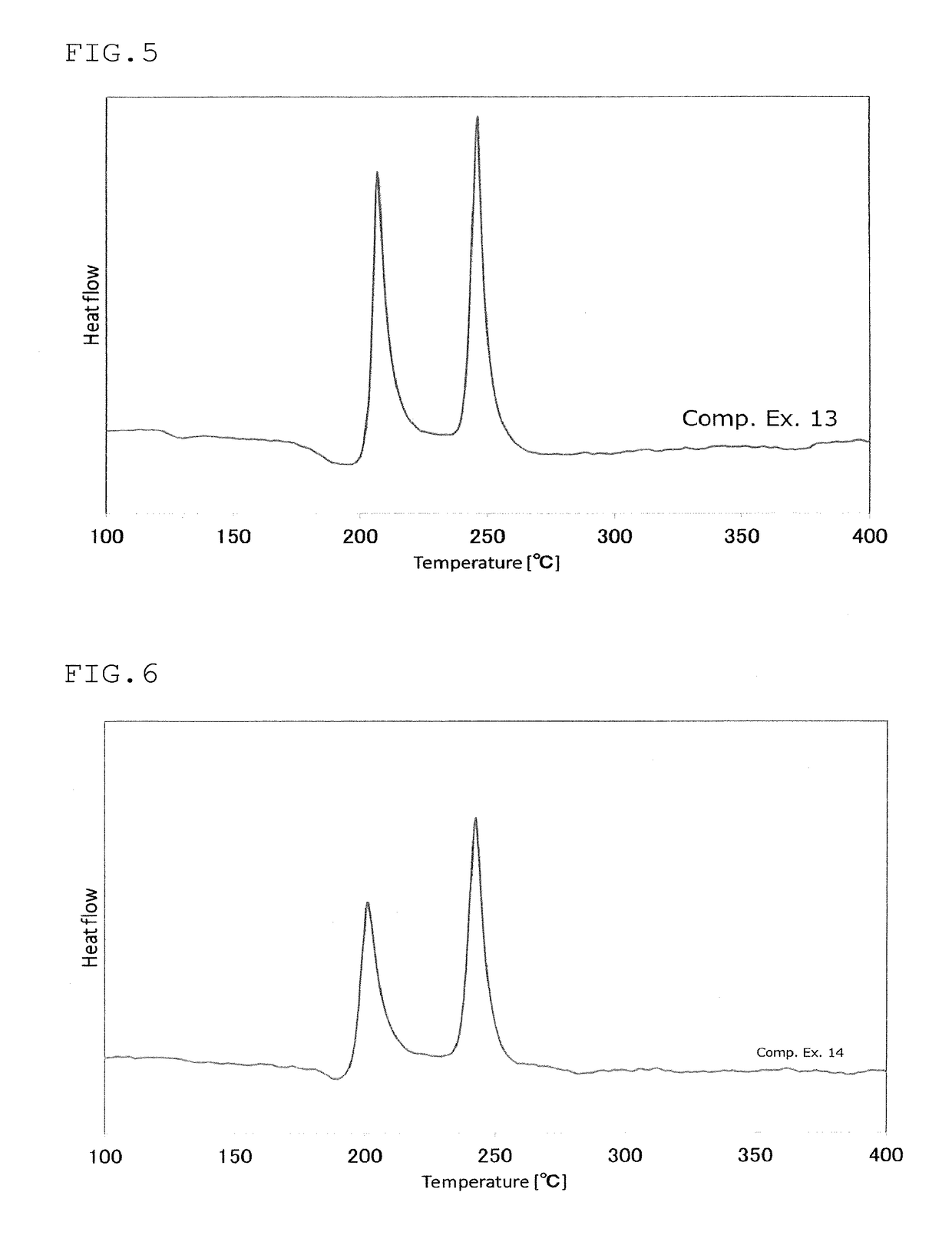Sulfide glass and crystalline solid electrolyte production method, crystalline solid electrolyte, sulfide glass and solid-state battery
a technology of sulfide glass and crystalline solids, which is applied in the direction of electrochemical generators, cell components, non-metal conductors, etc., can solve the problems of difficult heating at uniform temperatures and difficult production, and achieve the effect of easy production
- Summary
- Abstract
- Description
- Claims
- Application Information
AI Technical Summary
Benefits of technology
Problems solved by technology
Method used
Image
Examples
production example 1
[Production of Lithium Sulfide (Li2S)]
[0268]Production and purification of lithium sulfide were conducted as follows:
[0269]As the non-water soluble medium, 303.8 kg of toluene (manufactured by Sumitomo Corporation) of which the water content became 100 ppm as measured by means of a Karl Fischer Moisture meter by a dehydration treatment was added to a 500 L-stainless-made reaction vessel in a nitrogen flow. Subsequently, 33.8 kg of anhydrous lithium hydroxide (manufactured by Honjo Chemical Corporation) was put, and the temperature was retained at 95° C. while stirring by a Twinstir stirring blade at a stirring rate of 131 rpm.
[0270]While blowing hydrogen sulfide (manufactured by Sumitomo Seika Chemicals Co., Ltd.) to the slurry at a supply rate of 100 L / min, the temperature was elevated to 104° C. From the reaction vessel, an azeotropic gas of water and toluene was continuously discharged. This azeotropic gas was dehydrated by condensing in a condenser outside the reaction system. D...
production example 2
[0276][Production of Phosphorus Sulfide (Extract 1) Having a Large P4S9 Content]
[0277]As for 25 g of phosphorus pentasulfide as a commercially-available product (manufactured by Thermophos International B.V., Special grade / FS, hereinafter referred to as the “commercially-available phosphorus sulfide”), extraction was conducted for 24 hours with an extraction cycle of 4 to 5 times per hour by the Soxhlet extraction method in which carbon disulfide (manufactured by Sigma Aldrich Co., LLC, Super dehydrated) was used as a solvent. After completion of this extraction, the extract was evaporated to dryness, and then, volatile matters remaining in the extract were removed under vacuum (less than 1 Torr or less than about 130 Pa, ordinary temperature).
[0278]As a result of an XRD measurement conducted for the resulting phosphorus sulfide as an extract (Extract 1), peaks attributed to P4S10 and α-P4S9 were observed, and among these peaks, the main peak derived from α-P4S9 was confirmed. It wa...
production example 3
[0292][Production of Phosphorus Sulfide with a Small P4S9 Content (Remaining Product 1)]
[0293]As for 25 g of phosphorus pentasulfide (manufactured by Thermophos International B.V., Special grade / FS), extraction was conducted for 24 hours with an extraction cycle of 4 to 5 times per hour by the Soxhlet extraction method in which carbon disulfide (manufactured by Sigma Aldrich Co., LLC, Super dehydrated) was used as a solvent. After completion of this extraction, the matters remaining in the cylindrical filter paper were evaporated to dryness, and then, volatile matters remaining in the remaining product were removed under vacuum (less than 1 Torr or less than about 130 Pa, normal temperature).
[0294]As a result of an XRD measurement conducted on the resulting product (Remaining Product 1), peaks attributed to P4S10 and α-P4S9 were observed. Among these peaks, it was confirmed that the product was phosphorus sulfide of which the main peak of P4S10 is large.
[0295]For the obtained phosph...
PUM
| Property | Measurement | Unit |
|---|---|---|
| temperature | aaaaa | aaaaa |
| temperature | aaaaa | aaaaa |
| lithium ion conductivity | aaaaa | aaaaa |
Abstract
Description
Claims
Application Information
 Login to View More
Login to View More - R&D
- Intellectual Property
- Life Sciences
- Materials
- Tech Scout
- Unparalleled Data Quality
- Higher Quality Content
- 60% Fewer Hallucinations
Browse by: Latest US Patents, China's latest patents, Technical Efficacy Thesaurus, Application Domain, Technology Topic, Popular Technical Reports.
© 2025 PatSnap. All rights reserved.Legal|Privacy policy|Modern Slavery Act Transparency Statement|Sitemap|About US| Contact US: help@patsnap.com



